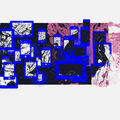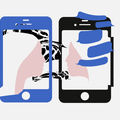General writing guidelines for articles in English
Target audience
Aalto University’s newsfeed articles are for people interested in science and research, art, education, culture and society. Our readers include many members of our community: students, personnel, alumni, partners, as well as potential students. International media also see our press releases and other news via direct links from media services, social media or while visiting our website.
Style
Aalto uses British English spelling. For example, we spell words like centre, colour and programme in the British way. When in doubt, look up the British spelling for example at https://www.lexico.com/en (powered by Oxford Dictionaries). When it comes to words like analyse, maximise and organisation, our style is to write -ise/-isation instead of -ize/-ization.
Headline
A good headline captures the topic in an interesting way, giving the readers a reason to continue reading.
The suggested length for a title in English is 8–10 words (60–70 characters including spaces). It’s better to have a clear and concise phrase than break the headline into two parts with a dash or colon.
Note that English headlines are typically written in the active voice and present tense and use shorthand, which means they do not necessarily form full sentences. Using this format will help you reduce the length of one of the most important parts of your article.
- Top international panel recognises Aalto’s fashion programme
(Not: Aalto’s fashion programme has been recognised by a leading international panel)
Note that Aalto uses sentence case for headlines and not title case.
Subhead (i.e. lead text)
Press releases and news always have a subhead, also called a subheadline or standfirst. The subhead complements the main headline with extra information in line with the chosen angle. Ideally, the same words/components should not appear in both the main headline and subhead.
Subheads in English should be a single brief phrase and written in shorthand, like the headline. In practice this means that subheads are not necessarily complete sentences and, unlike in Finnish, do not use periods at the end of the phrase.
Since the article appears on the aalto.fi website, it isn't always necessary to mention Aalto by name here.
Don't copy the exact same text as in the summary field to the lead text. This will negatively impact search engine optimisation and thus the findability of your content.
Main text
The main text of an article stands by itself; in other words, readers do not need to see the headline or subhead to understand the main text.
To insert the main text in Drupal, use a text component. It should follow the lead text component, that is, the subhead.
General writing guidelines
When mentioning the university for the first time, use its full name, Aalto University. Later you can use either ‘the university’ (in lower case) or simply ‘Aalto’.
The full names of schools and departments should always be capitalised in English. Short forms (i.e., ARTS, BIZ, ENG, ELEC, CHEM, SCI) are not used in articles accessible to the public. To refer to a specific school without using the full official name each time, use simply ‘school’ - always in lowercase.
Avoid abbreviations in texts. If they are unavoidable, write out the term fully the first time it's used and put the abbreviation in brackets. For example:
- Artificial Intelligence (AI)
- Virtual Reality (VR)
- European Union (EU)
Numbers 1–9 are typically written out (one, two, three). If there are lots of number in the text, they can be listed in numerical form (1–9).
As a general rule, translate Finnish terms into English. In some cases, it can be helpful to include the Finnish term in parentheses. This is particularly true when a place or concept is referred to mostly by the Finnish term, for example, Tietotekniikan talo or T-talo.
Always define scientific terms in the text. If you can’t explain a concept, it shouldn’t be in the text.
Names and titles
Use people’s full names in bold upon first mention in the main text. This applies also to those names mentioned in the headline or subhead.
Use position titles over academic degrees in English-language texts, as degrees do not translate well. Note that, in English, titles are capitalised when they appear before a full name but not when they appear after it.
- Professor Matti Aurinko has taken a close look at what that means.
- Matti Aurinko, a professor of applied physics at Aalto University, has taken a close look at what that means.
- Dr Samantha Smith is looking to make the next breakthrough in solar cell development.
- Postdoctoral researcher Samantha Smith is looking to make the next breakthrough in solar cell development.
Not: Doctor of Science (Technology) Samantha Smith
Use the last name to refer to the same person again in the same text. In English, it isn’t necessary to repeat someone’s position or academic qualification upon subsequent mentions. First names also become unnecessary after the first mention; use their last name only. Too many details suggest to the reader that you are introducing a new individual.
- Alum / alumni: In singular form use the word alum and in plural alumni.
Quotes
Aalto uses single quotation marks, following the most typical British style. Punctuation (i.e., commas, periods, exclamation points and question marks) is placed within quotation marks. Double quotation marks – like those used in Finnish or American English – only appear to indicate quotes within quotes.
- ‘Policy makers often portray enterprises as passive players when it comes to sustainability,’ says Salmivaara.
- ‘That’s precisely what we expected!’ he adds.
- He replied, ‘that’s precisely what we expected.’
- ‘That’s correct,’ he explains. ‘It’s precisely what we expected.’
- “That’s precisely what we expected,” he told me, though I was convinced we’d get another finding,’ Smith explains.
Note that, while rarely needed, double quotation marks in English (“”) differ from those used in Finnish.
Contractions
Contractions add fluency to the text when used appropriately. If you’re unsure of when or how to use them, it’s best to omit contractions but be aware that, depending on the text, the result can be harder to read. Contractions are especially useful in quotes, because people use them naturally when they talk.
- I’ve, we’ve
- you’re, we’re
- shouldn’t
- can’t
- aren’t
Commas
Commas are used differently in English. They mainly work to separate distinct ideas and help the reader make sense of the information provided. In quotes, place commas inside quotation marks. See this brief guide to learn more about comma use.
Common errors made by native Finnish speakers include placing a comma:
- before ‘that’: It is clear, that -->
- outside of quotation marks: ‘The alternatives are fantastic’, explains Smith.
Note that Aalto does not use the serial (or 'Oxford') comma before the last item in a list: 'red, blue and green' not 'red, blue, and green' .
Hyphens and dashes
There are three similar punctuation marks in English, each with a different function.
A hyphen (-) joins words or parts of words together. Note that, depending on their position in the sentence and how they are used, sometimes these terms will appear without hyphens (consult Oxford Dictionaries for specific terms).
- up-to-date
- sixty-six
Note that hyphens are not used in English for compound terms like seminar or project names. Their full names are instead capitalised.
- WDC seminar
- Design for All project
Use an en-dash (–) for dates and intervals. Programmes like Microsoft Word typically convert these from hyphens automatically.
- 3–4 weeks
Em-dashes (—) are used to highlight or mark off information, typically in place of commas. Use spaces around em-dashes to facilitate online reading.
- These are two very different understandings of what entrepreneurs can — and should — do,’ Kibler says.
Subheadings in the main text
Use subheadings in the body of the text to help readers along from one topic or theme to another. A good subheading is concise, informative and interesting. Try to make all subheadings within the text roughly the same length. They should be written in a style that fits the text.
Make a subheading in Drupal by using Heading 2 style.
Image captions
Image captions play an important role in a news article. They present interesting details from the piece, the main theme, what the photo is about, or who is in the photo, in addition to providing credit to the photographer. Note that, in English, there are no spaces around the slash.
- Photo: Aalto University/Kaisa Kuvaaja
Fact boxes
As needed, you can use a fact box, which offers readers additional information, after the main text of the article and contact details for more information.
Don't add a long fact box to a short news article. Try to keep each element around the same length. Use titles and add sources, as required.
In Drupal, create a fact box by using the table tool. Use bullet points or number, depending on your need.
Contacts for more information
At the end of a press release, add contact details for at least one of the people cited in the text who is prepared to answer questions from the media.
The English and Finnish versions do not have to list the same person or people. In the case of collaborative work, list the Aalto-based contact first.
Be sure to use an internationally recognisable format by adding the country code to the phone number.
Mikko Mallikas
Postdoctoral researcher
Aalto University School of Business
Email: mikko.mallikas@aalto.fi
Phone: +358 40 123 4567
Author information
Add the author of the news piece to the author field in Drupal or at the end of the text in italics.
- Text: Tommy Smith
Visuals
Each news article has at least one visual element, either a photo, image or infographic. If a photo hasn’t been specifically taken for the article, you can choose something from the university's material bank (materialbank.aalto.fi).
At Aalto, we don’t use images from external image banks. Avoid using images with logos.
Be sure to read guidelines on how to use photos at Aalto’s brand.aalto.fi. Remember to also add an image caption with credit to the photographer or illustrator.
Guidelines for writing
How to write a news article
Brush up on your news writing in English to catch the readers’ attention.

Guidelines for writing a Q&A article
Learn how to write a must-read interview with Aalto personnel.

Tools for academic writing
This page lists tools, apps, software and resources that can help with academic writing.
Translators’ language tips
Tips on language usage in Finnish, Swedish and English from the Aalto University translators.







